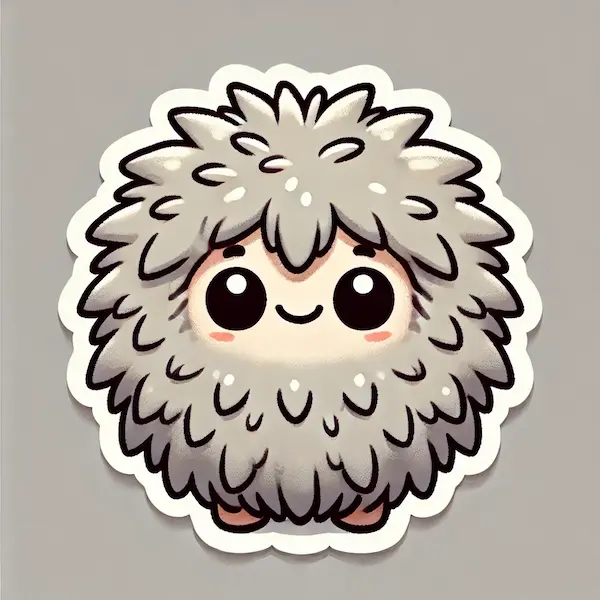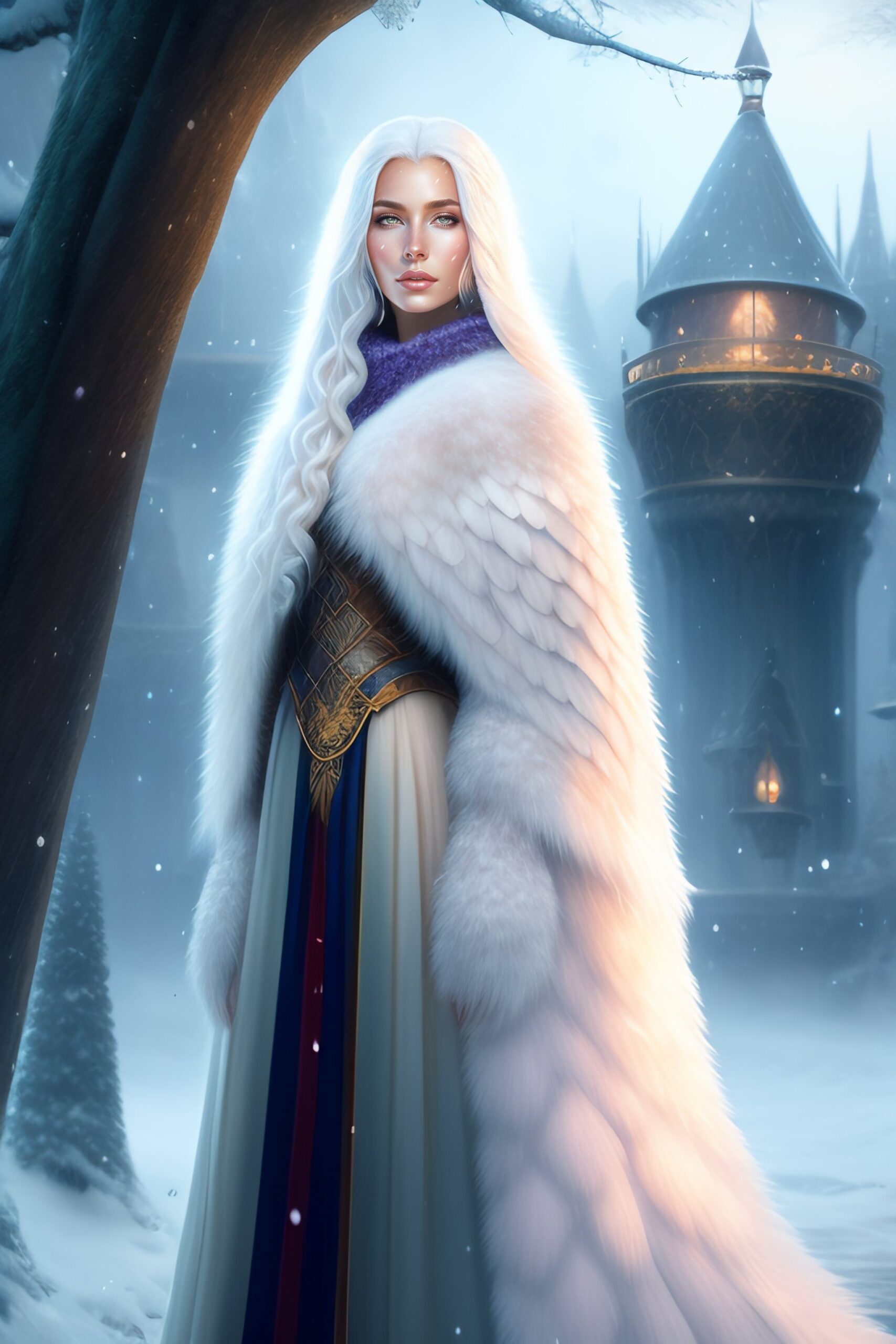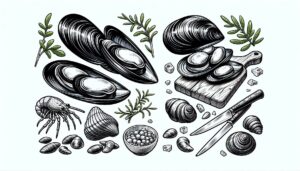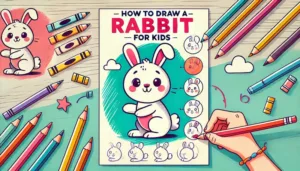Whether it’s the flowing mane of a lion, the soft coat of a kitten, or the rugged texture of a wolf, fur is a captivating element to capture in art. Adding fur to your illustrations can bring them to life with depth, texture, and a realistic touch. Whether you’re just starting out or have some experience under your belt, this comprehensive guide will help you master the art of drawing fur with precision and style.
Table of Contents
Supplies You Will Need
Before embarking on the art of fur drawing, make sure you have the necessary materials:
- Consider opting for a high-quality paper that can withstand multiple layers of pencil and erasing.
- Pencils: A variety of pencils available for shading, ranging from hard to soft.
- Eraser: An excellent tool for making corrections and lightening areas as needed.
- Blending tools: Tortillons, blending stumps, or even tissue for softening and blending pencil strokes.
- Reference images: While not required, they can be quite useful for studying fur patterns and textures.
Step 1: Understand the Basics of Fur
Before we get started with the actual drawing, it’s important to have a good grasp of fur’s unique characteristics. Various animals exhibit a wide range of fur textures, lengths, and patterns. Take a look at fur in the real world or use reference images to understand these differences.
Step 2: Start with a Solid Foundation
Start by drawing a rough outline of the animal’s body, paying attention to its proportions, pose, and anatomical correctness. The foundation provides the structure for your fur drawing.
Step 3: Identify Fur Flow
Animals have a distinct pattern in which their fur naturally grows. Make sure to thoroughly examine your reference images (if you’re using any) to grasp the way fur moves. This contributes to the creation of a lifelike appearance. Begin drawing gentle lines that flow with the natural direction of the fur, using a delicate touch.
Step 4: Layer Pencil Strokes
To create more depth and texture, try layering your pencil strokes. Start with gentle strokes and gradually apply more pressure to build up darker layers. Overlapping brushstrokes can create the illusion of separate strands of fur. Try out different pencil grades to create a range of shades and textures.
Step 5: Pay Attention to Shadows and Highlights
Pay close attention. Notice how shadows add depth and volume to the fur. Conversely, highlights on the fur give it sheen and vitality. Utilize pencils to incorporate shading and intentionally leave certain areas untouched to depict highlights.
Step 6: Explore Cross-Hatching and Blending
Cross-hatching is a technique that involves using parallel lines in various directions to add shading to your artwork. Employ cross-hatching in regions where fur is more concentrated or seems to have a deeper shade. Furthermore, utilize blending tools like tortillons or blending stumps to create a smoother and more realistic appearance by softening and merging the pencil lines.
Step 7: Add Intricate Details
To create a truly impressive fur drawing, enhance it with delicate and intricate details. Consider lightly sketching individual strands of fur, particularly around the edges or focal points. The delicate lines add depth to the fur’s texture. Just be patient, as this step can take some time.
Step 8: Erase and Adjust
During the drawing process, it might be necessary to make some adjustments and erase certain areas that need improvement. Children, the eraser can be your best companion. It can assist in reducing or fixing undesired lines, ensuring that your drawing stays faithful to your vision.
Step 9: Final Touches and Highlights
Take a careful look at your drawing, making any necessary tweaks to the shadows, highlights, and finer details. With the use of white or light-colored pencils, you can add highlights to bring out the sheen and depth of the fur.
Tips for Success
- Study References: Exploring real-life fur textures and reference images can provide valuable insights into fur direction, shading, and details.
- Try out different pencil grades to achieve a range of textures, from soft and fluffy to coarse and long fur.
- Be patient: Drawing fur can be a time-consuming process, so it’s important to take your time and focus on each layer and detail.
- Learn about Fur Varieties: Various animals possess unique fur textures and patterns, so it’s important to study the specific characteristics of the animal you’re drawing.
- Take it Easy: Adding excessive detail to your drawing too early can result in a loss of subtlety and realism, so it’s important to avoid overworking it.

Frequently Asked Questions (FAQs)
Is it possible to create realistic fur drawings even as a beginner in art?
Of course, it is absolutely possible for beginners to learn how to draw fur realistically. With a little practice, the techniques outlined in the guide can assist in creating lifelike fur textures.
Is it necessary to use reference images when drawing fur?
While it’s not mandatory, it’s highly recommended to use reference images, especially if you’re just starting out. They can assist you in comprehending fur patterns and textures, offering a visual reference for precise depiction.
Which type of paper is ideal for capturing the texture of fur in drawings?
An excellent choice for drawing fur is a high-quality drawing paper or sketchbook that can withstand multiple layers of pencil and erasing. Opt for papers with a medium tooth (surface texture) to enhance grip and blending.
Is it possible to use colored pencils or other mediums instead of graphite pencils to draw fur?
Definitely! Various art mediums, such as colored pencils, charcoal, pastels, and more, can be used to create realistic fur textures. Every medium has its own distinct texture and can produce a variety of effects. Explore to find what suits your preferences.
How can I create the appearance of fur texture using only lines and shading?
It’s important to use strokes that go in the same direction as the fur. Build texture by gradually layering and overlapping lines. Experiment with adjusting the pressure on your pencil to create a range of shades and depths.
What is the most effective technique for depicting fur with various colors or patterns, such as those found on a calico cat or a spotted dog?
When creating fur with various colors or patterns, it’s important to observe the natural divisions between different shades or spots. Make sure to shade each section appropriately and use a blending tool to achieve seamless transitions between various colors or patterns.
Can you suggest a technique for creating a smooth and glossy fur texture, similar to that of aquatic animals like seals or dolphins?
To achieve a smooth and polished look, it’s best to use short and even strokes that follow the natural flow of the fur. Ensure that the shading is kept light and that careful attention is given to the delicate highlights and shadows. A gentle pencil might be a good choice for this kind of fur.
How can I achieve the texture of damp fur or fur in motion, such as a dog shaking off water?
When working on creating the texture of wet fur or fur in motion, it can be helpful to use reference images to get a better understanding of the desired look and feel. Pay attention to capturing the unique, flattened texture of damp fur or the sense of motion in your drawing.
What are some tips to avoid smudging when working with pencil on fur?
To avoid smudging, it’s a good idea to place a spare piece of paper under your hand while you’re working. This will help prevent any direct contact with the paper and keep it clean. Additionally, fixative sprays can be used to seal your drawing after completion, effectively preventing any smudging.
How much time does it usually take to develop a high level of skill in drawing fur with a realistic touch?
The amount of time it takes to become skilled at drawing fur varies depending on your level of commitment and regular practice. Through consistent dedication and perseverance, one can witness notable progress within a few months. However, achieving true mastery may require several years of unwavering commitment and continuous growth.
Is it possible to create digital fur using graphic design software or a drawing tablet?
Of course! There are various methods available for creating digital fur, including using graphic design software, drawing tablets, or specialized apps. Digital tools offer a great deal of flexibility, making it easy to make corrections and providing a variety of brushes and textures to effectively simulate fur.
Conclusion
Mastering the art of drawing fur can be a fulfilling and impressive pursuit. By following this comprehensive guide and incorporating the provided tips, you can discover the techniques for creating fur that looks incredibly lifelike and realistic in your artwork. Alright, grab your pencils and get ready to dive into the captivating world of fur. Let your imagination run wild as you embark on a creative journey full of depth and texture. Enjoy your artistic endeavors!
Check out this fun guide for easy instructions on how to draw a friendly alien! This guide provides easy steps for young creators to make a playful and imaginative drawing of an alien character!





